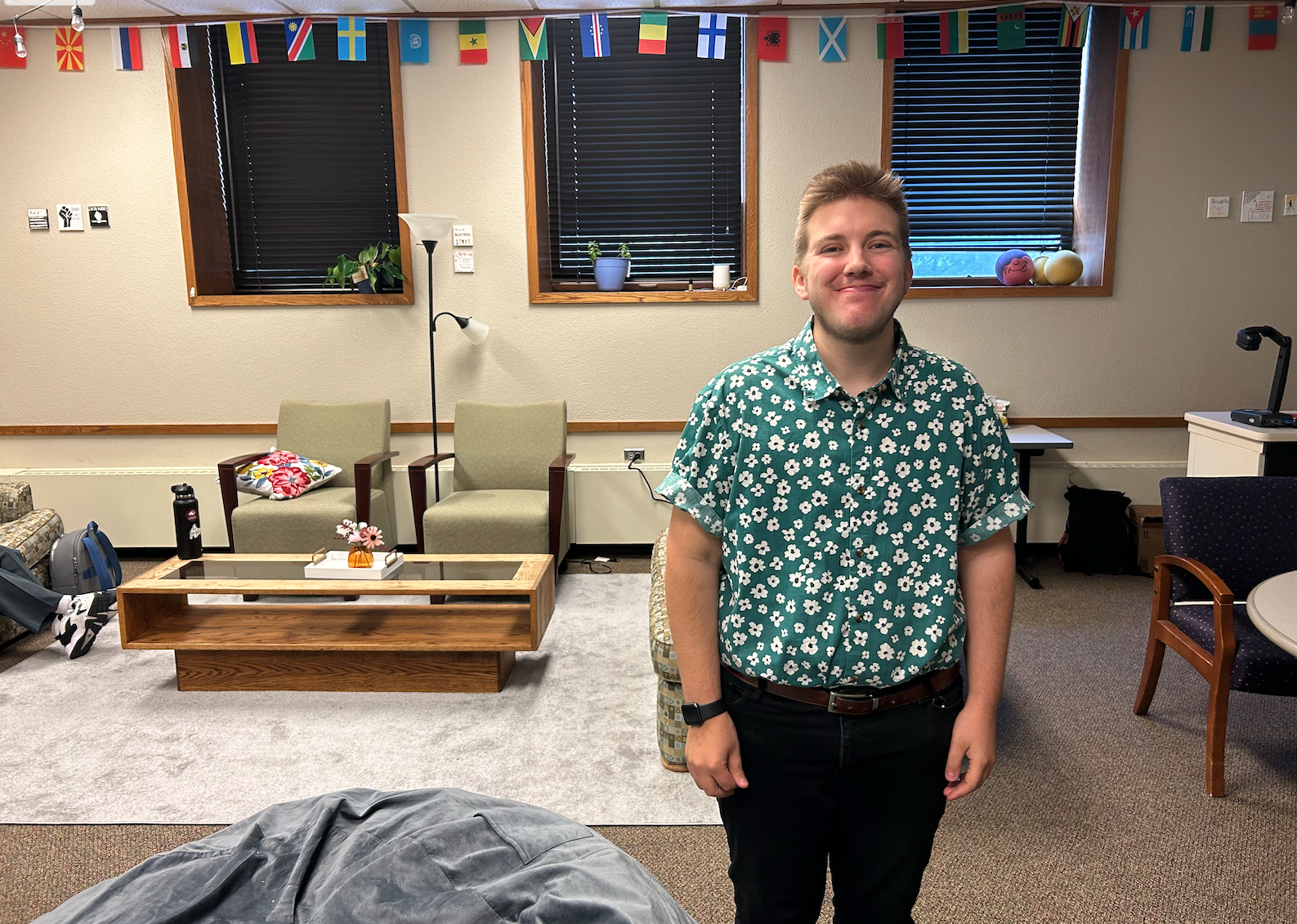MOORHEAD — On Tuesday, Sept. 19, students were welcomed to an open house of the IDEA Lounge in Old Main 102. The new space on campus is dedicated to inclusion with “IDEA” standing for inclusion, diversity, equity, and access.
The project was spearheaded by several student leaders of the affinity student organizations on campus, including the Diversity, Equity and Inclusion Commission, International Student Organization, Club Access, and many others.
A year ago, students of color and queer students identified a need for a safe space to share community with others, according to assistant director of student engagement Elijah Amelse. Since those conversations started, Amelse and the student leaders on campus worked with the Center of Student Sucess, admissions and facilities to make their dream into a reality.
“It’s supposed to be a shared space, and I think you can kind of see that with how we created it. We included a lot of different voices to make it happen,” Amelse said.
The purpose of the IDEA Lounge is to be a flexible space for students to use informally to create community and cultivate inclusion. Director of the Center of Student Success Heidi Rogers helped with the creation of the lounge, and to her, the space is less about identity and more about mindset.
“When you come to the space you don’t have to prove your identity, but you’re coming into the space with the mindset of inclusion and that’s the most important thing. It’s meant to serve and support specific identities, but you don’t have to prove anything when you’re here. You just have to show up and be inclusive,” Rogers said.
Assistant director of admissions and DEI coordinator Rachael Harvey hopes that all students are welcome to the lounge, especially those who have multiple identities.
“The thing I like about this space is that it’s not just a queer specific space, or a space for students of color or international students. It really lends itself to intersectional identities so that someone who has multiple identities can come and hopefully have an affirming experience,” Harvey said.
One of the best things about the space is that it is so flexible to student needs, Amelse said. Whether students want to hang out, study, or use it as a rest stop between classes, the lounge is made to change with the needs of students.

Maria Klipfel / The Concordian
“One day I came in and on the white board was chemistry homework and right next to it was education on Afro hair and how to care for it—both conversations can be happening in this space and that’s what we want. We want this to be an intentional space where we recognize that identity and culture are important, valued, celebrated, and are a part of the larger dialogue on campus,” Amelse said.
The space is non-reservable because the hope is that no students are denied access to the space and that it remains open for whomever needs it, according to Amelse.
Not only can this space be used informally, but the hope is that students can engage in conversations of inclusion or find community during hard times, Rogers said.
“When things happen in the world that are hard and scary for specific identities, this can be a healing space where we come together and convene in the future or for past situations,” Rogers said.
Old Main was picked as the location of the lounge because of several reasons identified by student leaders, Amelse said. The goal was to find a location that was central on campus, had an accessible elevator, gender neutral bathrooms and a space with more privacy than the MLK lounge.
The space was largely funded by DEIC but had contributions from the Center of Student Success. The Center for Holistic Health donated couches to the space.
“It really was primarily the student leaders from the affinity organizations and DEIC that led the charge and provided the backing for this space. This wouldn’t have been possible without students saying this is important that they want this,” Amelse said.
The organizers worked in conjunction with facilities to identify a space for the IDEA lounge. Project Specialist Brenda Jarolimek helped with clearing the space, supplying furniture, and coordinating the open hours of the lounge to match academic building hours.
The lounge used to be a classroom that was decommissioned, but the room still has the technology available. Students have used it to project Korean dramas and international soccer tournaments. In addition to technology, the space features flags and art that reflect multiple cultures and identities.
“The hope is to have art that reflects a lot of different identities. We welcome feedback on ways that we can improve the space and uplift that even more,” Amelse said.

